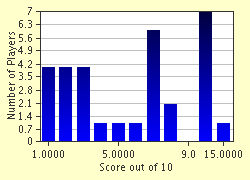
End of the Line Trivia Quiz
Though some Tube services may terminate at intermediate stations, these ten are at the end of their lines on the London Underground. Just match the station to the correct line. A few may overlap, but there's only one solution!
A matching quiz
by eburge.
Estimated time: 4 mins.
